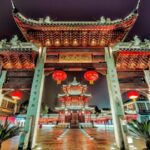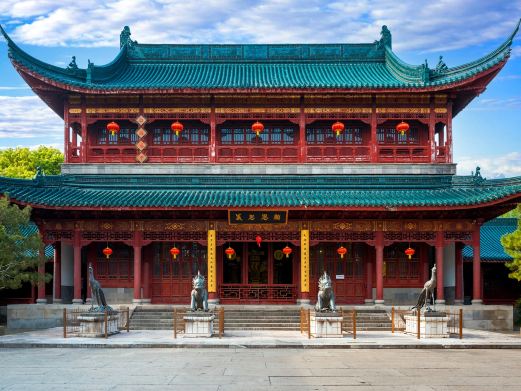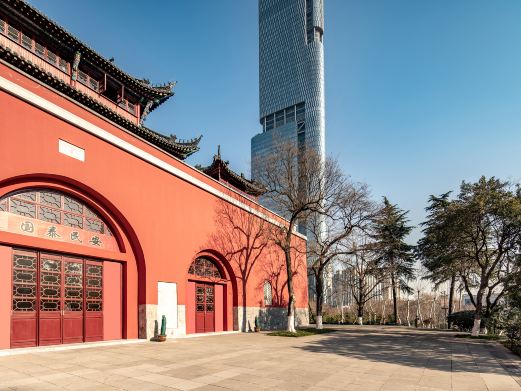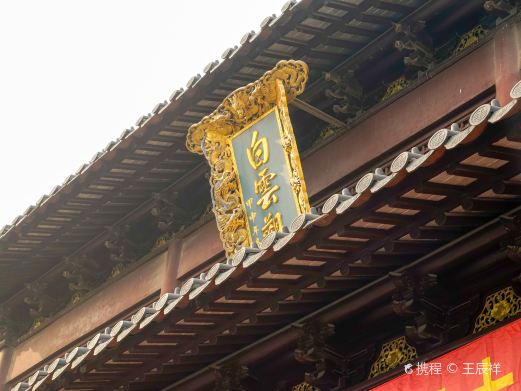Lanting is located approximately 13 kilometers southwest of the ancient city of Shaoxing, at the foot of Lanzhu Mountain, and is famous for the elegant gathering of Wang Xizhi and others, who left behind the renowned ‘Preface to the Poems Composed at the Orchid Pavilion’. Although Lanting is not large, it boasts an exquisite scenery. The main attractions here include the Goose Pond Stele, Lanting Stele, Qushui Liushang, and the Imperial Stele Pavilion.
Not far past the ticket check, you will see a stone slab inscribed with the cursive script ‘Goose Pond’. It is said that the character ‘Goose’ was written by Wang Xizhi, which appears elegant and upright, while the character ‘Pond’ was written by his son Wang Xianzhi, and is more bold and unrestrained, hence the name ‘Father and Son Stele’. Almost all visitors take photos here. Legend has it that Wang Xizhi loved geese, and several pure white geese are raised in the Goose Pond of Lanting today.

On the north bank of the Goose Pond is the Lanting Stele Pavilion, where the characters ‘Lanting’ are written in the imperial script by Emperor Kangxi. Next to the Lanting Stele is the area of Qushui Liushang, which can be simply understood as a modern drinking game. Someone places a cup filled with wine at the upstream of the winding stream, and the cup, supported by a lotus leaf, floats downstream.

The Right Army Ancestral Hall is a memorial hall for Wang Xizhi, surrounded by lotus ponds on all sides, built during the Kangxi period. The main attraction here is various imitative versions of the ‘Preface to the Poems Composed at the Orchid Pavilion’. Continuing westward, you will see the Imperial Stele Pavilion. The front of the stele is a copy of the ‘Preface to the Poems Composed at the Orchid Pavilion’ written by Emperor Kangxi, and the back is a seven-character poem ‘Lanting Jishi Poem’, composed by Emperor Qianlong during his visit to Lanting. The stele, inscribed by two generations of emperors, is also known as the Ancestor and Descendant Stele. This unique phenomenon is a national treasure and the pride of Lanting.

Behind the Imperial Stele Pavilion, there are eighteen water jars, where visitors can use a brush pen to write on stone tables with water, experiencing the scene of Wang Xianzhi learning to write. Additionally, in the northwest of the scenic area, there is the Lanting Calligraphy Museum and the Lanting Porcelain Inkstone Art Museum, which display numerous calligraphic works and a variety of inkstones. If interested, visitors are encouraged to visit. The scenic area is open all year round from 08:00 to 16:50. The Lanting Calligraphy Museum is closed on the first Monday of each month (except during Golden Weeks and statutory holidays), while the core scenic area remains open.









